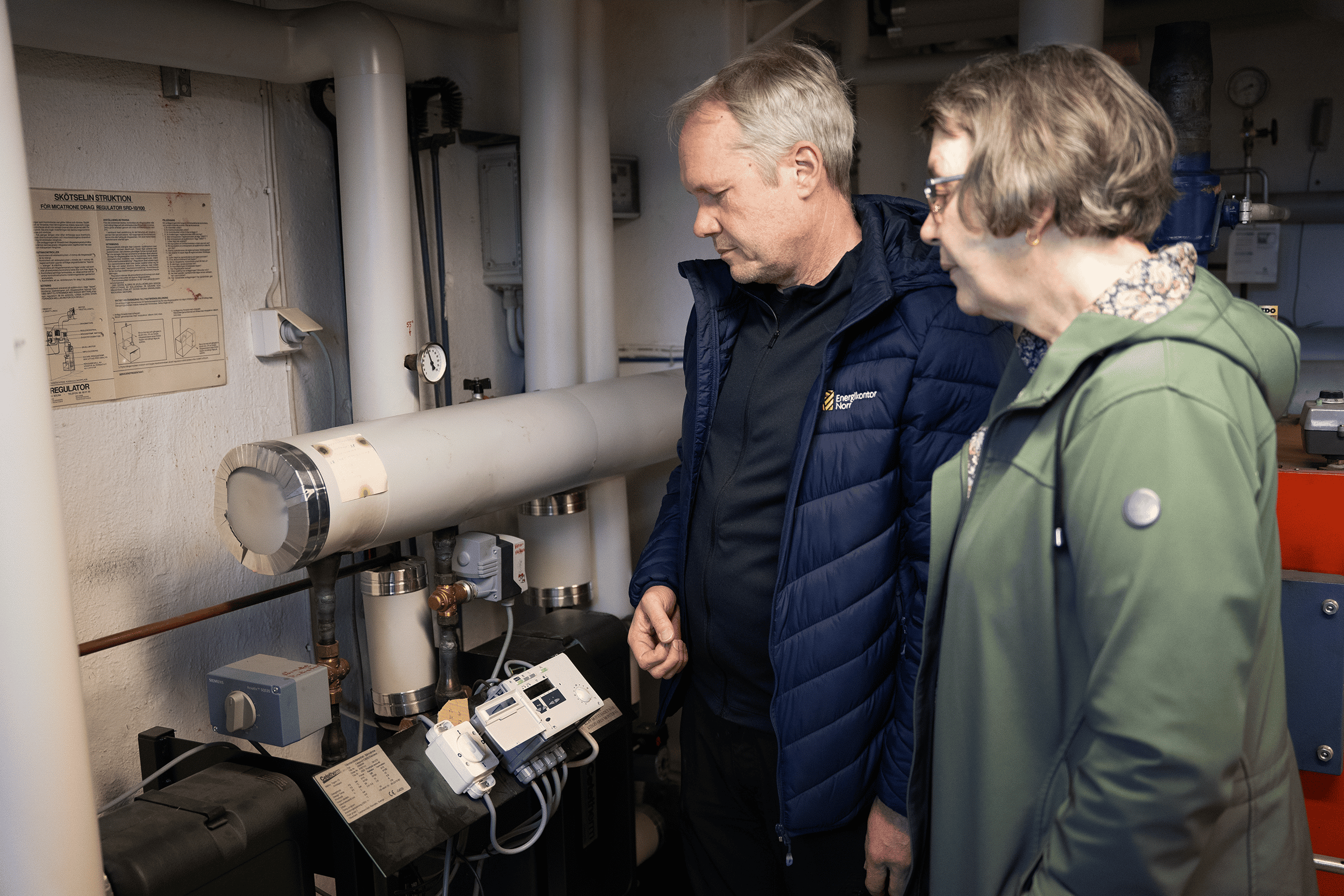
How an Energy Audit Can Help Housing Associations Cut Costs and Improve Efficiency
24 April 2025
Arvidsjaurhus Nr 1, a housing association in northern Sweden, wanted to lower its energy costs but wasn’t sure which changes would have the biggest impact. To get a clearer picture of their energy usage and identify the most effective solutions, they decided to carry out an energy audit. The results provided valuable insights and a concrete plan to save money while improving indoor comfort for residents.
Founded in 1945, the housing association Arvidsjaurhus Nr 1 consists of two identical buildings in central Arvidsjaur in northern Sweden. The complex has 16 apartments and, like many older buildings, has long struggled with uneven indoor temperatures and high energy bills.
Sara Lundberg moved into the community in 2019 and became chairperson in 2023. She describes the biggest challenge as a lack of expertise:
“We knew we needed to make changes but didn’t know where to start. None of us are experts, and we had little experience with procurement. So, we reached out to North Sweden Energy Agency for guidance.”
From Energy Performance Certificate to Comprehensive Audit
The association also needed to update its legally required Energy Performance Certificate (EPC), which must be renewed every ten years. After consulting with North Sweden Energy Agency, they decided to take it a step further and conduct a more in-depth energy audit. This approach provided more actionable insights and specific recommendations.
“An energy audit is a great starting point for anyone looking to reduce a property’s operating costs and improve energy efficiency. Plus, the findings can be used when reporting the EPC to the national authorities,” explains Erika Strömvall from North Sweden Energy Agency.
Effective Measures That Make a Difference
With support from North Sweden Energy Agency, Arvidsjaurhus Nr 1 hired a consultant to conduct the energy audit. The results highlighted both quick, low-cost improvements and larger investments that could have a significant long-term impact.
“We were advised to switch to more energy-efficient lighting in stairwells and basements – something we’ve already started working on. Other recommendations included optimizing the ventilation system, adjusting indoor temperatures, and installing solar panels,” says Sara.
By implementing these measures, the association could improve its energy rating from D to C. The rating Swedish scale runs from A to G, with C meeting the standard for newly constructed buildings.
“The audit gave us a clear roadmap for reducing costs and improving indoor comfort. We’re now developing a long-term investment and maintenance plan, starting with the easiest and most affordable improvements,” Sara adds.
Beyond Financial Savings
Reducing energy consumption has benefits beyond lower electricity bills. A better energy rating can also mean more favourable loan terms from banks and increased property value.
“Besides saving money, an energy-efficient building can make apartments more attractive to buyers. It’s an investment in both financial stability and sustainability,” Erika explains.
For many associations, cost reduction is the main priority. But for Sara, sustainability is just as important.
“We don’t want to waste energy. This is a step toward a more sustainable future, not just for us but for future generations.”
Advice for Other Housing Associations
For other associations looking to cut energy costs, Sara has a clear recommendation:
“Knowledge is always valuable. An energy audit provides the insights needed to make informed decisions and create a more sustainable community. I highly recommend it to all housing associations.”
Step-by-Step Process
The housing association contacted North Sweden Energy Agency for assistance with its EPC and to explore potential cost savings.
- North Sweden Energy Agency helped the association to hire a consultant.
- Together, the association and consultant collected energy data and other relevant information.
- The consultant conducted a detailed on-site inspection over two days.
- The data was analysed, and findings were compiled into a report.
- The report was presented at a board meeting, where board members could ask questions.
- The EPC was updated and submitted to national authorities based on the audit’s findings.
EPC vs. Energy Audit: What’s the Difference?
By law, Swedish housing associations must have an EPC. An energy audit, however, goes further – it examines how energy is used in the building and identifies specific ways to improve efficiency. It also provides cost estimates and projected savings for suggested improvements.
Support Throughout the Process
For many associations, navigating energy efficiency improvements can be overwhelming. It’s not always clear what to ask for when requesting quotes or which professionals to contact. A One Stop Shop can provide expert guidance throughout the process, and help associations make informed decisions for a more energy-efficient property.
The RenoWave project
The work was carried out within the “RenoWave” project of the Interreg Baltic Sea Region program. North Sweden Energy Agency is one of eleven partners across Europe and is working on the project in northern Sweden.
For questions, please contact Erika Strömvall, project manager at North Sweden Energy Agency, erika@energikontornorr.se.
The article was written by Jenny Björnfot, communication manager at North Sweden Energy Agency.







